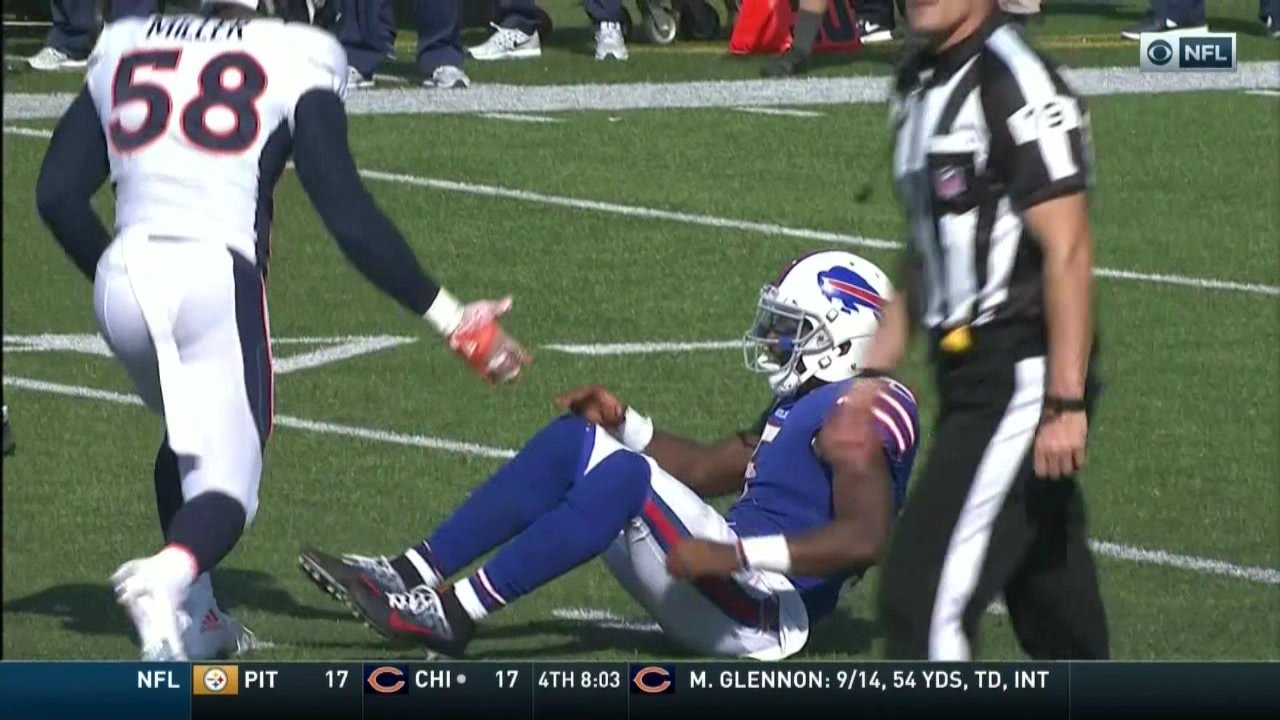I’ve been a Broncos fan as long as I can remember. It started out as cheering for the underdog. Then they won Super Bowls XXXII and XXXIII and they weren’t the underdogs any more. They’ve had good years and bad years. Win or lose, they’re my team. (Though, of course, I prefer it when they win.)
Like any good fan, I’ll yell at the refs when they get a call wrong and accuse them of favoritism. I’ll cheer when luck turns against the other team—and when luck goes our way? Why, that wasn’t luck—we were prepared and we were ready!
When there’s incontrovertible proof of an infraction against us, I’ll begrudgingly accept the penalty. But this week, I cried foul before the ref ever reached for the flag. I was glad they saw it and called it against us.
With 7:43 left in the 4th quarter, Bills quarterback Tyrod Taylor threw an incomplete pass right as Denver linebacker Von Miller took him to the ground. Miller stood then offered his hand to Taylor to help him get up. When Taylor reached for his hand, Miller quickly raised it out of reach (the “too slow” move), leaving Taylor to raise up on his own. The referee penalized Miller for unsportsmanlike conduct, a 15-yard penalty, giving the Bills an automatic first down.
Now, for the moment, set aside the fact that this kept the Bills’ drive alive and they ended up scoring a field goal. It may have cost us the game. Even if that penalty cost us the season (and if we go 15–1, I’ll say it did) it was the right call.
“Unsportsmanlike conduct” is probably the broadest penalty you can incur in the NFL. The rulebook lists 23 specific actions that are considered unsportsmanlike. Like most sports, the rules also include a general “among others” clause that grants the referees broad discretion in assessing penalties.
The rules of a game serve three purposes:
- Define the contest. The rules lay out how you determine a winner and the actions you can (and can’t) take to get there.
- Keep the players safe. Some rules, like spearing or pulling on the facemask, are designed to minimize the chance of injury. No one wants to see anyone get hurt.
- Teach the players character. Some rules are designed to teach the players how to conduct themselves. Sports programs teach kids teamwork, dedication, endurance, perseverance, and sacrifice. You celebrate together. When you get knocked down, you learn to pick yourself up and get right back at it.
If you’re gonna play the game, boy, you gotta learn to play it right.
Kenny Rogers, “The Gambler”
If Miller had actually helped Taylor to his feet, that would have been a classy move. Pure class. Pulling his hand away, he might have just been having a moment of fun. (If you watch the video, it looks like both Miller and Taylor are laughing about it.)
But the referee threw the yellow flag. And it was the right call. If you’re in the NFL, you’re in the spotlight. There are lots of kids looking up to you and watching how you conduct yourself. They’re going to emulate you. And there are coaches, trainers, and parents across the country trying to teach those kids one thing:
It’s not just whether you win or lose. It’s how you play the game.
Question: Who can you help to their feet today? Share your thoughts in the comments, on Twitter, LinkedIn, or Facebook.

